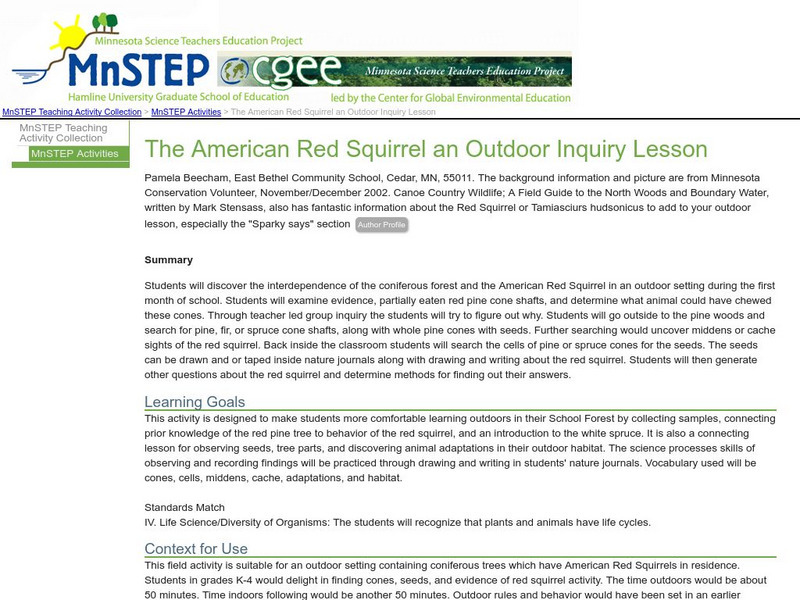Curated OER
Soil, Forest, and Land Exploitation
Students debate over the cutting of rainforests in order to put people to work. They then brainstorm ways it may be possible to provide jobs for people and to preserve the rainforest.
Curated OER
Which Way to Roots Grow?
Second graders explore roots and how they grow. They observe as seeds planted in various directions grow and record their observations. Students discuss the direction in which the roots are growing.
Curated OER
Not Just For A Baby's Bottom
Eighth graders investigate the presence of talc in the geologic record. The different characteristics of talc is covered. The lesson includes background information for the teacher.
Curated OER
Bell Live! The Great Lakes: A Superior Adventure
Students participate in a virtual field trip to Lake Superior. In groups, they perform experiments in which test the level of toxins and bacteria in the water. They also watch video segments life in the lake and discuss their observations.
Curated OER
A Seed Grows
Second graders begin the activity by planting their own bean seed. Individually, they make predictions about how many leaves and roots their plant might grow and each day record their observations. They graph the results of the length of...
Curated OER
How Does the Rice Farmer Help Birds When They Fly South in the Winter Time?
Students draw a picture of a bird in a rice field. In this social studies lesson, students then fold a piece of paper so that there are 4 spaces. Students then draw one thing in each square that birds get from the rice field.
BioEd Online
Bio Ed Online: Plant Parts You Eat
Did you know that some plant parts are edible? People rely on many different plants and plant parts for food. In this lesson students observe and investigate different plant-originated foods, and learn about plant parts.
TeachEngineering
Teach Engineering: Planting Thoughts
Students gain an understanding of the parts of a plant, plant types and how they produce their own food from sunlight through photosynthesis. They also learn about transpiration, the process by which plants release moisture to the...
OpenSciEd
Open Sci Ed: 7.4 Matter Cycling & Photosynthesis
Where does food come from and where does it go next? This unit helps students figure out that they can trace all food back to plants, including processed and synthetic food. They obtain and communicate information to explain how matter...
Countries and Their Cultures
Countries and Their Cultures: Fali
The Fali belong to the vast paleonegritic group of people who are sometimes designated "Kirdi" (pagans), as opposed to the Islamized Peul or Fulbe, with whom they share the northern part of Cameroon. The Fali are farmers and...
PBS
Nh Pbs: Nature Works: Ecosystems
How would you define an ecosystem? Check out this educational resource to learn more about the living and nonliving parts of different ecosystems.
Science Education Resource Center at Carleton College
Serc: Mn Step: The American Red Squirrel an Outdoor Inquiry Lesson
For this activity, students are presented with red pine cones that have been partly eaten by the American Red Squirrel, a fact that is not divulged to them at this stage. After a discussion of the possibilities, the class takes a walk in...
Countries and Their Cultures
Countries and Their Cultures: Pende
The Pende occupy a territory that extends from the banks of the Lutshima, a tributary of the Kwilu, to the Kasai. The last colonial census (1959) indicated that there were 200,000 western Pende and another 40,000 Pende in Kasai, the...
Curated OER
Etc: Maps Etc: Population Distribution of Asia, 1921
A base map of Asia from 1921 showing the general population distribution of the region at the time. "The climate of southeastern Asia is so warm and moist that food plants grow there in abundance. Nearly half the people of the world live...












